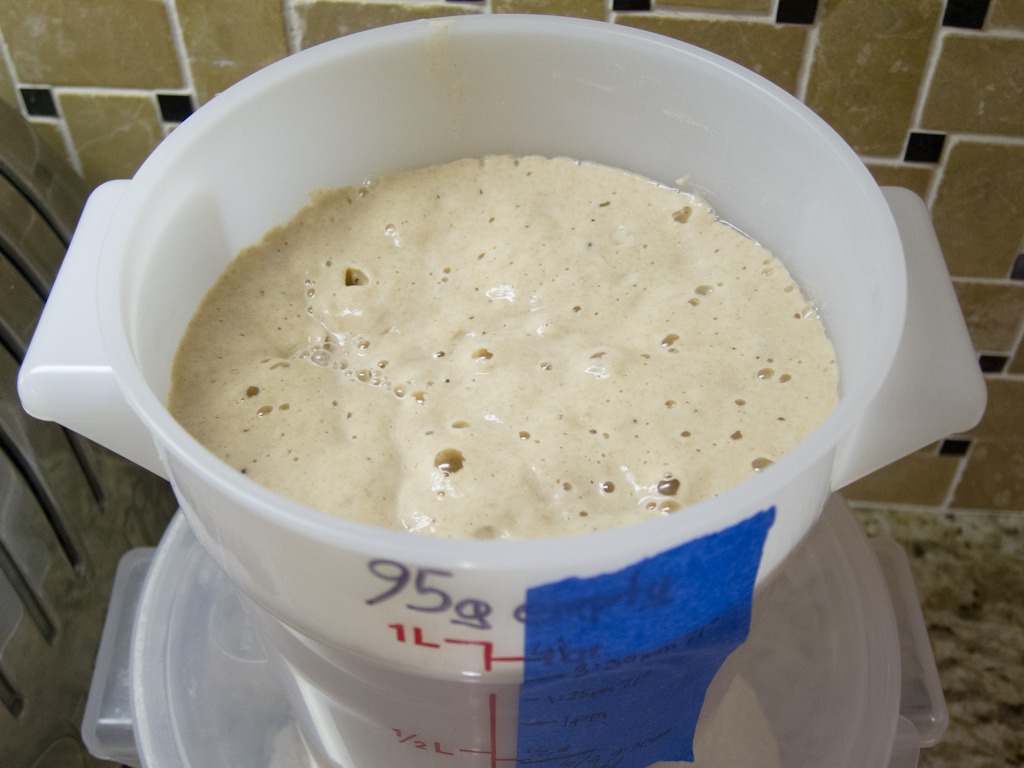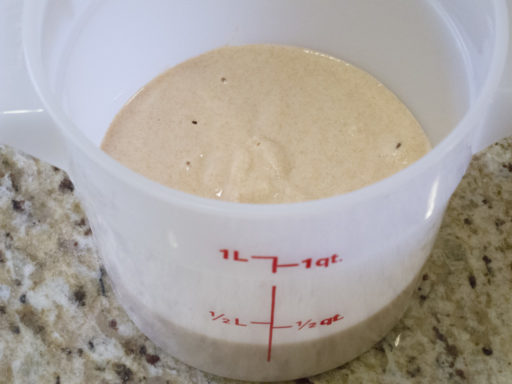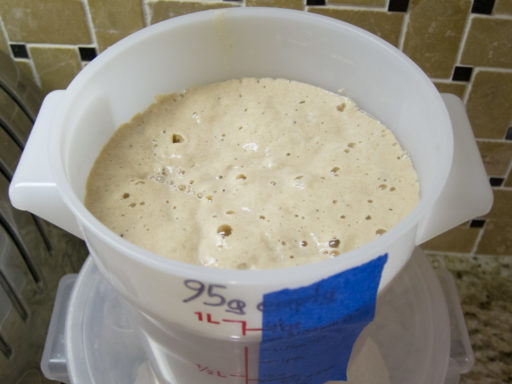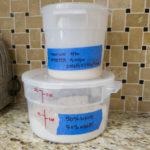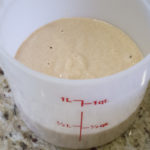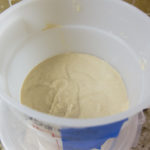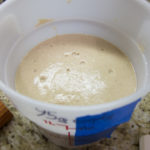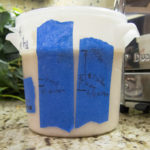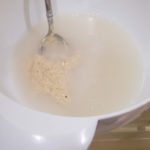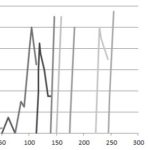Tartine Sourdough Starter
I’ve only had marginal success making sourdough bread from a starter. My first attempts were with a homegrown starter that never worked (loaves 15 and 18). We made great bread at my SFBI sourdough class, but I only had moderate success with sourdough I made at home with their starter (loaves 27, 29, 34 and 41) – the loaves looked nice but I didn’t really like the flavor. I decide to start over again making a new starter from scratch.
This time I used the technique from Chad Roberson’s Tartine Bread book. His approach is very simple, so simple in fact that he doesn’t even include amounts:
“Fill a small, clear bowl halfway with lukewarm water. Add a handful of the 50/50 flour blend to the water and mix with your hands to achieve the consistency of a thick batter with no lumps.”
The 50/50 flour blend is half unbleached white flour and half whole wheat flour. I’m using only King Arthur flour this time, hoping that it gives a better flavor than the Gold Medal I used before.
I wanted to be a bit more scientific, so I measured as I went. To get a ‘thick batter’ consistency I found 200g of water and 150g of flour to be about right. This is a 133% hydration and looks like this:
After two days on the kitchen counter it had become very bubbly and had grown about 5% – a good sign and right on schedule. For my first feeding I used about 150g starter, 150g water and 150g 50/50 flour. This started it towards a 100% hydration.
A day later it was very bubbly, smelled like bad cheese, and the water had separated. Sometime in the middle of th night it had grown about 15% and then shrunk back down. I took on faith that this was okay and did a second feed of 100g starter, 200g water and 200g 50/50 flour.
This one took off. Over the next 24 hours it doubled in size. At it’s peak it was very foamy and sweet smelling. Success! I had a living starter!
At this point it settled into a routine. After a feeding (the same ratio as the second feed) it would double in size in six to eight hours at my kitchen temperature of around 70°. Here’s my geeky part…
I put tape on the side of the container and would mark it’s height on occasions. I put those heights into a spreadsheet and charted the growth. This first graph shows a line for each feeding starting at the time of the feed:
The bottom line (“Birth”) shows the batter’s first two days of life. The first feed grew 15% and shrank over the course of 24 hours. The second feed took off slowly, but eventually made it to doubling in size (100% growth). Each feeding after that has grown at a pretty consistent rate. The slopes here aren’t super accurate as I wasn’t measuring at consistent time intervals. So the starter is usable after the third feeding.
This second chart is the same data, but over a continuous time line.
It took about 130 to 140 hours to get a usable starter (about six days). You can also see that even though it was two full days between the sixth and seventh feed, the yeast didn’t seem to mind at all. Missing a day isn’t a big deal.
I’ve used this starter on a few loaves now (loaves 48 and 49), and the flavor is very nice. I’m still working on other issues with the bread, but I’m happy with this starter.
My experimentation going forward with this is using only white flour instead of 50/50 and seeing how to keep it for a longer time between feedings in the fridge.
- Sourdough starter birthday
- Birth: 200g water, 150g flour
- Fourth feeding
- Fourth feeding after ~3 hours
- Fourth feeding after 6 hours
- The scientific method
- Using the starter to make bread
- Starter Feeding
- Starter Life

